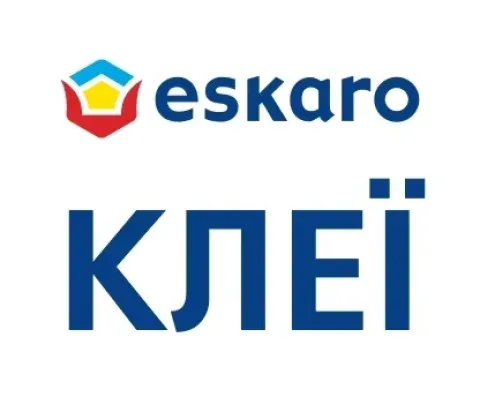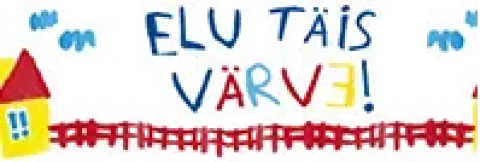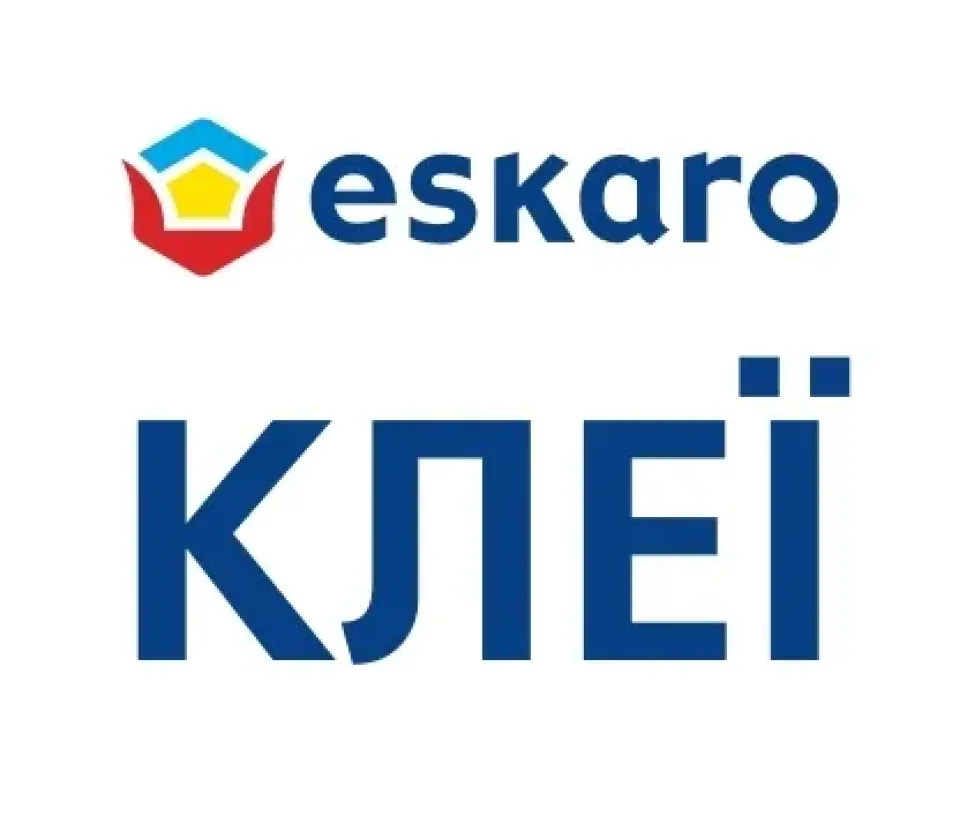
Glue should glue
«It is not salt that does not salt; it is not glue that does not glue.». Proverb.
An adhesive is a substance or mixture of substances that can bond (connect) different materials together.
Adhesives are classified:
- - by type of bonding: adhesives that dry and adhesives that do not dry;
- - by composition: organic and inorganic;
- - by physical state: liquid and solid;
- - and by many other parameters.
In everyday life, we often encounter the need to glue (adhere) different materials, such as paper, wood, fabric, leather, rubber, plastic, ceramics, glass and others.
These materials have different nature of origin, composition and properties, therefore, the adhesives used for their bonding also have different properties.
Of course, there are also universal adhesives that can be used to glue a large number of dissimilar materials together, but for this versatility you will have to pay more, because the cost of such adhesives is high. To perform the task of gluing a specific material, it will be much more economical to use a highly specialized glue, which will always be several times cheaper than a universal one, and will perform its task no worse, and often even better.
Bonding of materials is carried out by creating an adhesive* bond between the glue layer (glue seam) and the surfaces to be glued.
*) Adhesion is the adhesion (sticking) of surfaces of dissimilar solid materials to each other.
The strength of the adhesive seam depends on the cohesive** properties of the glue material itself.
**) Cohesion is the adhesion (bond) between particles (molecules, atoms) inside a homogeneous material.
There are many glues. There is a lot to say about their purpose, properties, composition, and application features. Therefore, here we will focus only on some of the glues that are most often used in construction repairs and in everyday life.
Next, we will talk about one-component liquid water-dilutable organic latex-based*** binder adhesives that dry.
***) Latex is a general name for emulsions of polymer dispersed particles in an aqueous solution.
Latex binders include such dispersions as: polyvinyl acetate, butadiene-styrene, styrene-acrylate, acrylic.
It should be noted that water-dilutable adhesives on latex binders bond well only those materials that have an absorbent surface.
Water-dilutable organic adhesives based on latex binders can be divided into two groups by composition: filled and unfilled.

In addition to the binder and solvent, the composition of the filled adhesive also includes a filler - a fine powder of mineral origin. It increases the dry residue of the adhesive and, accordingly, the thickness of the adhesive joint. Filled adhesives are usually pasty and have the consistency of a ready-made putty, but sometimes these adhesives can be less viscous. They almost do not shrink after drying. This property is of great importance for gluing surfaces with large irregularities. In this case, the filled adhesive additionally performs the function of a putty, filling all the recesses on the surface and creating a homogeneous, void-free, equally strong adhesive joint throughout the volume. The filler also increases the viscosity of the liquid adhesive, which ensures the fixation of the surfaces to be glued even before the adhesive sets.
Unfilled adhesives usually have stronger bonding strength than filled ones, but they do not provide the same initial strong fixation until the solvent evaporates and a binder film forms. Therefore, unfilled adhesives require additional fixation of the surfaces, which complicates the bonding process. In addition, unfilled adhesives have a strong shrinkage: from 50% to 90%. They are effective only for creating thin adhesive seams and bonding as flat surfaces as possible.
The main characteristic of an adhesive is its bonding strength. In practice, this indicator is measured as follows: after gluing two surfaces, a dynamometer measures the force required to break the adhesive seam. This indicator is directly related to the amount (concentration) of the dispersion of the adhesive substance in the adhesive. Therefore, the more dry residue in the adhesive****, the higher its bonding strength.
****Dry residue - a solid (dry) component of a paint and varnish product that remains after the evaporation of the volatile component - the solvent. Its value is expressed as a percentage of the mass of the paint and varnish product.
However, this rule is valid only for unfilled adhesives. Filled adhesives always have a very large dry residue, but it is so mainly due to the filler, which does not have adhesive properties.
In everyday conditions, it is possible to assess the strength of the adhesive not quantitatively, but qualitatively. To do this, it is necessary to mechanically destroy the adhesive seam - "separate" the glued surfaces. If the strength of the adhesive joint is higher than the strength of the glued materials, then an indicator that the required adhesive strength has been achieved is the destruction of the adhesive along the material, and not along the adhesive seam.

In addition to bonding ability, adhesives are also divided by resistance to water.
For the classification of adhesives by water resistance, the European standard DIN EN 204 has been widely used in Ukraine for the last ten years. This standard regulates the requirements for the water resistance of adhesive joints, taking into account the standards for the shear strength of adhesive joints for wood in accordance with another European standard - DIN EN 205.
The DIN EN 204 standard provides for the division of adhesive joints for wood into four load groups by water resistance (from lowest to highest): D1, D2, D3, D4. It is taken into account that the thickness of the adhesive joint should not exceed 0.1 mm.
Load groups of adhesive joints for wood according to DIN EN 204
| Load groups for waterproof adhesives | Examples of areas of application and climatic conditions of operation of adhesives with different water resistance. |
| D1 | Inside rooms where the wood humidity does not exceed 15%. |
| D2 | Indoors with occasional short-term exposure to running water or condensation and/or occasional short-term exposure to high air humidity with an increase in wood moisture content up to 18%. |
| D3 | 1. Indoors with frequent exposure to running water or condensation and/or high humidity. 2. Outdoors, if protected from direct climatic influences. |
| D4 | 1. Indoors with frequent short-term exposure to high temperatures and running water or condensation. 2. Outdoors in case of direct climatic influences, but with appropriate surface protection. |
Minimum values for wood bonding strength for thin glue joints (~0.1 mm) according to DIN EN 205
№ exposure groups | Type and duration of exposure for glued wood | Shear bond strength according to DIN EN 205 by load groups, N/mm2 (kgf/cm2), not less than | |||
| D1 | D2 | D3 | D4 | ||
| 1 | 7 days*) under normal conditions**) | 10 (100) | 10 (100) | 10 (100) | 10 (100) |
| 2 | 7 days under normal conditions 3 days in cold water***) 7 days under normal conditions | - | 8 (80) | - | - |
| 3 | 7 days under normal conditions 4 days in cold water | 2 (20) | 4 (40) | ||
| 4 | 7 days under normal conditions 4 days in cold water 7 days under normal conditions | - | - | 8 (80) | - |
| 5 | 7 days under normal conditions 6 hours in boiling water 2 hours in cold water | - | - | - | 4(40) |
| 6 | 7 days under normal conditions 6 hours in boiling water 2 hours in cold water 7 days under normal conditions | - | - | - | 8(80) |
*) 1 day = 24 hours;
**) normal conditions - temperature (23±2)°C and relative humidity (50±5)% or temperature (20±2)°C and relative humidity (65±5)%;
***) cold water temperature is equal to ambient air temperature.
A large number of household and construction adhesives are made on the basis of PVA (PolyVinylAcetate dispersion).
Ready-made PVA-based wallpaper adhesives are unfilled adhesives with a small amount of dry residue: 10-15%. For example, glue «Seinaliim » ТМ Eskaro.

General construction adhesives, as well as adhesives for reinforcing fiberglass and non-woven fabric based on PVA, are unfilled adhesives with a dry residue of 10-20%. For example, glue «Fix PVA » ТМ Aura, fiberglass glue «G 505 » TM Grover.
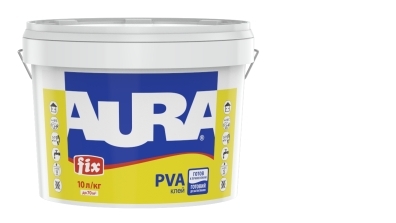
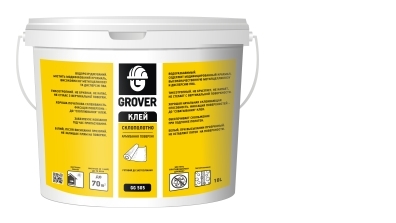
PVA universal adhesives are unfilled adhesives with a solids content of 40-45%. They usually meet the requirements of D2 DIN EN 204/ DIN EN 205..
PVA furniture (carpentry) adhesives are unfilled adhesives with a dry residue of 48-50%. They meet the requirements of D2, D3, D4 DIN EN 204/ DIN EN 205. For example, the adhesive meets the requirements of D2 «PVA Liim» TM Eskaro, meets D3 requirements glue «B3 Niiskuskindel Puiduliim » ТМ Eskaro, and the D4 meets the requirements glue «B4 Niiskuskindel Puiduliim » ТМ Eskaro.
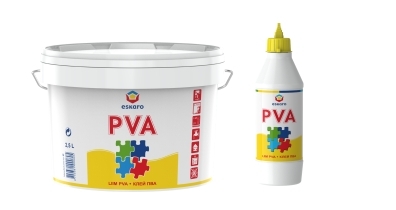
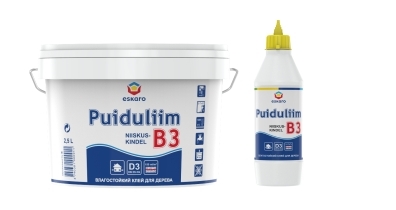

PVA-based adhesives for polystyrene (expanded polystyrene) parts for interior decoration are filled adhesives with a dry residue of 60-70%. And in the dry residue the ratio "filler/dry residue from latex" is 70%/30%. For example, glue «Styropor» ТМ Eskaro.
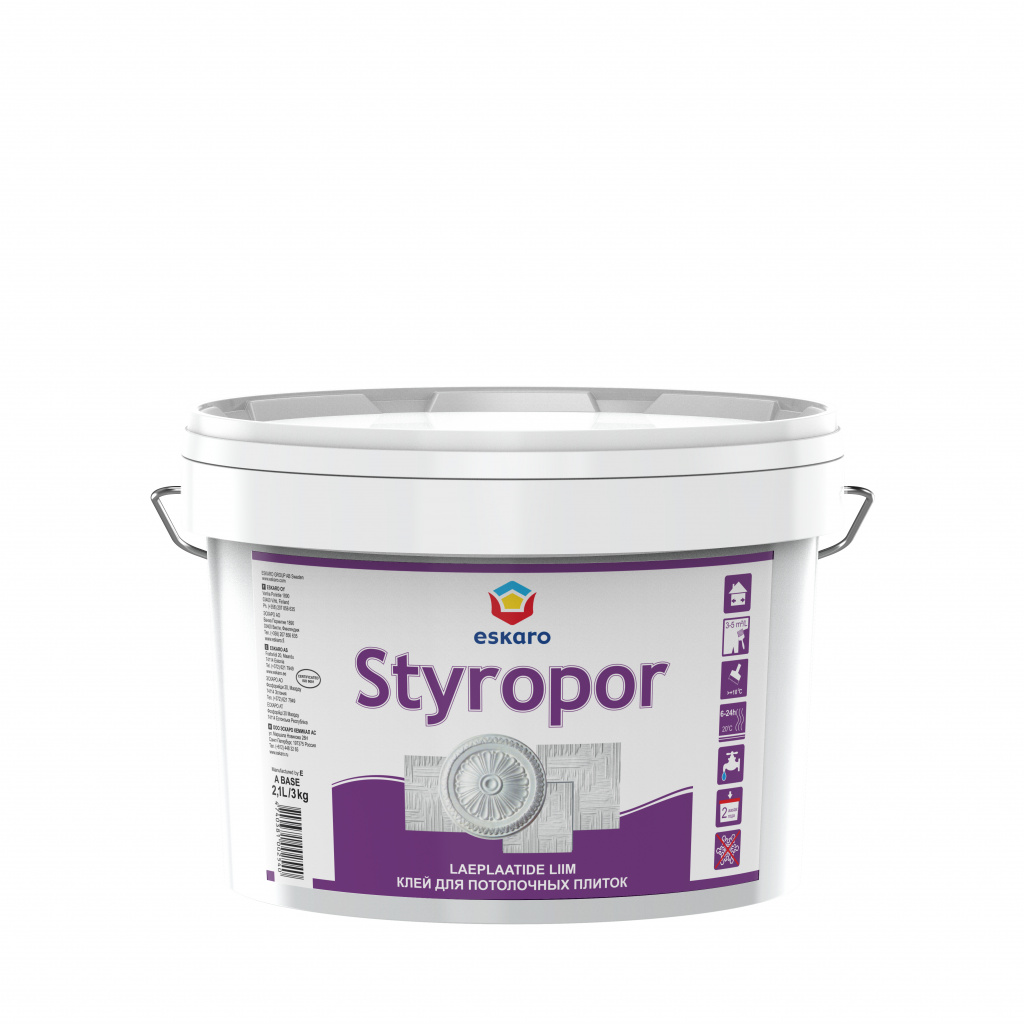
Some household and construction adhesives are made on the basis of butadiene-styrene dispersion.
A well-known representative of adhesives based on butadiene-styrene dispersion is the universal filled construction adhesive "Bustilat". Similar to it is the glue "Polyfix" TM Eskaro. These adhesives can be used in dry and wet rooms. The dry residue of these adhesives is 35-40%. And in the dry residue the ratio "filler/dry residue from latex" is 40%/ 60%.
Unfilled ready-made wallpaper adhesives for wet rooms can also be made on the basis of butadiene-styrene dispersion, for example "Niiskuskindel Seinaliim Aqua" TM Eskaro.
A number of adhesives are also made on the basis of styrene-acrylate dispersion:
Adhesives for polystyrene (expanded polystyrene) and polyurethane foam parts for interior decoration, in particular for wet rooms. They are filled with adhesives with a dry residue of 60-70%. And in the dry residue the ratio "filler / dry residue from latex" is 70% / 30%.
Adhesives for interior panel finishing materials from cork bark (sheet or roll). They are filled with adhesives with a dry residue of 60-70%. And in the dry residue the ratio "filler / dry residue from latex" is 75% / 25%. Such adhesives are usually made brown so that their color does not stand out at the joints.
Adhesives for gluing ceramic tiles, natural stone, gypsum and cement finishing tiles. Such adhesives are filled and highly viscous. Marble chips or quartz sand are used as fillers for them. Such adhesives have a dry residue of 65-75%. And in the dry residue, the ratio of "filler/dry residue from latex" is 30%/70%.

Based on acrylic dispersion, adhesives of the “liquid nails” type are usually made.
Such adhesives have increased strength and water resistance of the adhesive joint. For ease of use, “liquid nails” adhesives are produced in special tubes. They are filled and unfilled. Very fine marble chips are used as a filler for them.
Filled “liquid nails” adhesives have a dry residue of 70%. And in the dry residue, the ratio “filler/dry residue from latex” is 20%/ 80%. For example, extra-strong white assembly adhesive “GA 110” TM GROVER, adhesive for facade decoration “Styropor Strong” TM Eskaro.
Unfilled "liquid nails" adhesives have a dry residue of 45-50%. For example, extra-strong transparent assembly adhesive «GA 100» ТМ GROVER.
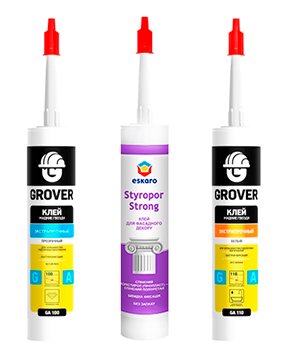
In order to perform the gluing reliably and qualitatively, not to spoil anything and not to redo the work later, before using the glue, you need to spend some time studying the label on the package, and pay special attention to the scope of the glue and the instructions for its use. You can learn more about the scope of the glue and the features of its use in more detail on the website eskaro.ua
The author is Varkuta A.G.





